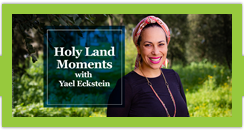At One-ment
September 24, 2012 - 5:00 am“Aaron shall bring the goat whose lot falls to the LORD and sacrifice it for a sin offering. But the goat chosen by lot as the scapegoat shall be presented alive before the LORD to be used for making atonement by sending it into the wilderness as a scapegoat.” — Leviticus 16:9 – 10
The Day of Atonement has a specific observance as described in the Bible, which revolved around two goats. Today, prayer and Bible readings take the place of that observance, but there is still much that we can learn from the practice that once was.
Here is what they did: Two goats were brought before the high priest. He cast lots to determine which goat would be sacrificed to the Lord, and which would be sent into the wilderness, bearing sins of the people. After the fate of each goat was decided, one goat was slaughtered and offered up to God, and the other was set free in the desert. When the free goat came to a cliff, he was pushed off. That was how he met his death.
What can we learn from this seemingly bizarre practice? What does it have to do with the personal changes we aim for on Yom Kippur?
Let’s take a look at this service from a different perspective – through the eyes of the goats. When the lots were cast, it would seem that the goat chosen for the wilderness received the better deal. His identical counterpart was immediately sacrificed while he was left alive. When the second goat got to the wilderness, it only confirmed that he got the better lot in life. He was set free to roam and do as he pleased. It was only at the last moment, when the goat realized he was about to meet his end, that he saw things differently. Perhaps the other goat was more fortunate than he.
Tradition teaches us that these two goats symbolize ways of living. The first goat represents those who chose to dedicate their lives to God. They nullify their will to His and give up their ego for the sake of God’s name. The second goat represents those who chose to live wild and free. They do whatever they please with no restrictions placed on them whatsoever.
These people look at God-serving individuals and pity them. But at some point, often just before they die, they consider that maybe they had been wrong all along. They recognize that everyone turns to nothingness eventually, but only some will have filled their lives with meaning.
Atonement is the same as “at one-ment.” When we choose to be at one with God, we are cleansed of all our sins. On Yom Kippur, we make this critical decision – do we live our lives in a wilderness of nothingness, or do we live a life filled with meaning and godliness? If we choose at one-ment, we will achieve atonement.

